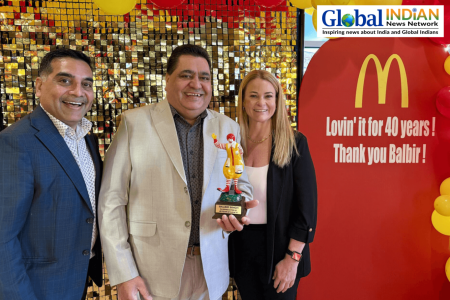
A journey through Atlanta’s expanding suburbs showcases the city’s evolving cultural landscape. Previously more uniform, these areas now feature cultural hubs, educational institutions, and places of worship that reflect the city’s diverse population, highlighting Atlanta’s emergence as the sixth-largest metropolitan area in the United States.
This diversity is prominently displayed through shops and vibrant billboards in various languages, including Chinese, Korean, Spanish, and Hindi. Long-time residents have witnessed these rapid changes firsthand.
“When I was younger, there were only a few Indians here,” recalls Hemant Ramachandran, an attorney from Gwinnett County, near Atlanta, which is central to Georgia’s growing Asian American population.
Demographic Changes in Atlanta’s Suburbs
In Gwinnett, Forsyth, and Fulton counties, demographic shifts are evident. Data from the county and Census Bureau show many census tracts and schools in these areas now have majority Asian American populations.
“The growth has been remarkable since my childhood. Metro Atlanta was never like this before,” Ramachandran notes.
Vice President Kamala Harris is scheduled to hold a major campaign rally in Georgia, emphasizing the political importance of Asian Americans, particularly Indian Americans. Harris, whose parents are Jamaican and Indian, seeks to connect with this crucial voting demographic, which could be influential in the upcoming election.
Harris’ heritage has ignited discussions in Asian American and immigrant communities across metropolitan Atlanta, energizing local activists. For many in the Indian American community, Harris’ journey holds special significance.
Ashwin Ramaswami, a 24-year-old tech entrepreneur and state senate candidate from a competitive suburb in Atlanta, notes that the South Asian community in the area is very enthusiastic about this unique moment.
Indian Americans Gaining Political Prominence
Harris’ rise coincides with a period of increased visibility for Indian Americans in politics. Currently, five Indian Americans serve in Congress, and notable figures like Nikki Haley and Vivek Ramaswamy were prominent in the 2024 Republican primary.
Democratic Rep. Pramila Jayapal of Washington, chair of the Congressional Progressive Caucus, was among the first to support Harris after President Joe Biden exited the race. According to recent Census data, Indian Americans are now the largest subgroup among Asian Americans. States like Arizona, Georgia, Nevada, and Michigan, with significant Indian American populations, could be crucial in a close presidential contest.
Georgia’s legislature includes seven lawmakers of Asian American descent from both parties. In north Fulton and Gwinnett counties, high school auditoriums often host classical Indian dance performances, and events like the Johns Creek International Festival draw large crowds from the region.
Motivated by enthusiasm for Harris’ potential nomination, her campaign has intensified its efforts in Georgia, recently gathering 300 supporters in Forsyth County, a traditional Republican area that has become more competitive due to growing diversity.
Identity and Voting Dynamics
Despite Harris’ unique identity as the first Asian American and Black American vice president, this does not guarantee automatic voter support. Conversations with more than a dozen Indian American voters revealed limited knowledge of her record, with many considering her background interesting but not decisive.
“I don’t have much insight on Kamala Harris yet,” says Ashish Sahu, a software engineer from Alpharetta. He expects to learn more through debates and campaign events, noting that his community is well-informed and independent, waiting to evaluate the best candidate.
Ramachandran observes that while representation is important, it becomes less significant with greater visibility. Prominent Indian American politicians often do not emphasize their heritage and span various political ideologies. However, there is a reflexive pride within the Indian diaspora when someone from their background achieves prominence.
Survey data shows most Indian American adults identify as Democrats, while about a quarter align with Republicans, and the remainder are independents or unaffiliated. More than half of South Asian American adults view Harris positively.
Ramaswami, whose mother grew up in the same Chennai neighborhood as Harris’ mother, finds the vice president’s campaign personally meaningful. He hopes increased visibility for Indian Americans will enhance their political and cultural influence.
“It’s encouraging to know that regardless of your background or origins, this country offers opportunities to serve and make a difference,” he says.













